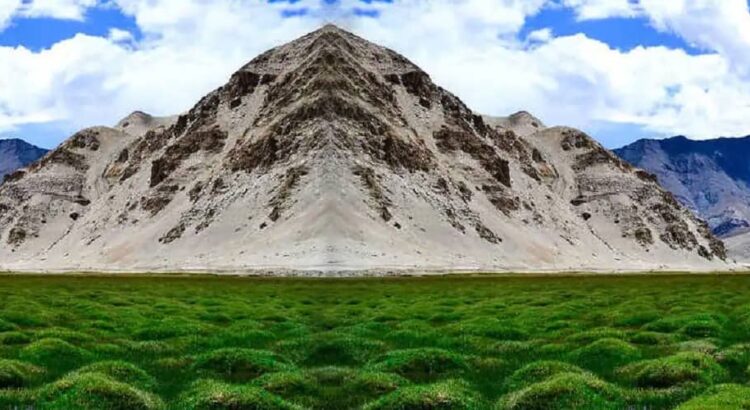Puga Valley is located in the Ladakh region of the northern Indian state of Jammu and Kashmir. The valley is known for its geothermal springs and geysers, which make it a potential site for geothermal energy production.
Geothermal energy is generated from the heat stored within the Earth’s core, and it can be harnessed for electricity generation and heating purposes. In Puga Valley, the high temperature geothermal springs could potentially be used to generate electricity, which would be a clean and renewable source of energy.
Currently, there are no operational geothermal power plants in Puga Valley, but there have been some exploratory activities in the area. The Geological Survey of India (GSI) conducted geothermal exploration in Puga Valley in the 1970s and reported the presence of high-temperature geothermal reservoirs at depths ranging from 100 to 1500 meters.
In recent years, there have been plans to develop geothermal power plants in Puga Valley. In 2015, the Ministry of New and Renewable Energy (MNRE) proposed a 25 MW geothermal power project in the valley. The project was expected to be implemented by the National Thermal Power Corporation (NTPC), but it has not yet been realized.
Overall, the potential for geothermal energy production in Puga Valley is promising, and further exploration and development could help unlock this valuable source of clean energy. However, it is important to conduct careful environmental and social impact assessments before any geothermal development takes place, to ensure that the local communities and the environment are not adversely affected.
How to get here?
Puga Valley is located in the Ladakh region of the northern Indian state of Jammu and Kashmir. Here are some ways to get to Puga Valley:
- By Air: The nearest airport to Puga Valley is the Kushok Bakula Rimpochee Airport in Leh. It is well-connected to major cities like Delhi, Mumbai, and Srinagar. From Leh, you can hire a taxi or take a bus to reach Puga Valley.
- By Road: Puga Valley is well-connected by road to Leh, which is the main city in Ladakh. You can take a bus or hire a taxi from Leh to reach Puga Valley. The distance between Leh and Puga Valley is about 200 km, and it takes around 6-7 hours to cover this distance by road.
- By Train: The nearest railway station to Puga Valley is the Jammu Tawi Railway Station, which is located in the city of Jammu. From Jammu, you can take a taxi or bus to reach Leh, and then from Leh, you can reach Puga Valley.
Things not to forget
It is important to note that the Ladakh region is a high-altitude area, and visitors are advised to take necessary precautions to prevent altitude sickness. It is also advisable to carry warm clothing, as the weather in Ladakh can be quite cold, even during the summer months.
image credits: india.com
Is geothermal energy produced in Puga Valley?
Yes, Puga Valley in the Indian state of Jammu and Kashmir is known for its geothermal activity and the production of geothermal energy. The region has several hot springs and geothermal fields, making it suitable for harnessing geothermal energy for various purposes, including electricity generation and heating. The Puga geothermal field is one of the prominent geothermal areas in the region and has been explored for its geothermal potential. Geothermal energy projects and research in Puga Valley have aimed to utilize the Earth’s natural heat to generate sustainable and clean energy for local use and potentially for wider distribution.
Where is the geothermal plant Puga Valley?
As of my last knowledge update in September 2021, there was a geothermal power plant located in Puga Valley, Jammu and Kashmir, India. This plant, known as the Puga Geothermal Power Plant, was one of the early geothermal power projects in India. It harnessed the geothermal resources in the Puga Valley for electricity generation.
Please note that the status and details of specific power plants can change over time, so I recommend checking the latest information or contacting local authorities or energy agencies for the most up-to-date information on the Puga Valley geothermal power plant.
Where are the geothermal sites in Ladakh?
Ladakh, a region in the northernmost part of India, is known for its geothermal activity and several geothermal sites. Some of the notable geothermal areas and hot springs in Ladakh include:
- Puga Valley: Puga Valley is one of the most famous geothermal areas in Ladakh. It is located in the eastern part of Ladakh and is known for its hot springs and geothermal resources. The Puga geothermal field in this valley has been explored for geothermal energy production.
- Chumathang: Chumathang, situated along the banks of the Indus River, is known for its hot springs. These hot springs are not only a natural attraction but are also used for medicinal and therapeutic purposes.
- Tso Moriri Lake: Tso Moriri is a beautiful high-altitude lake in Ladakh, and it is surrounded by geothermal springs. The hot springs around the lake are sometimes referred to as “Korzok Hot Springs.”
- Panamik: Panamik is a village in the Nubra Valley of Ladakh, and it is known for its hot springs. These hot springs are believed to have therapeutic properties and are a popular stop for travelers.
- Turtuk: Turtuk, a picturesque village in the Nubra Valley, also has hot springs that are used by locals and visitors for bathing and relaxation.
These geothermal sites and hot springs in Ladakh not only offer unique natural experiences but also serve as potential sources of geothermal energy and have cultural and medicinal significance in the region. Please note that the accessibility and conditions of these sites may vary, so it’s a good idea to check with local authorities or guides if you plan to visit them.
What type of energy is used in Puga of Ladakh?
In Puga Valley of Ladakh, geothermal energy is predominantly used. Puga Valley is known for its geothermal activity, including hot springs and geothermal resources. Geothermal energy harnessed from this region is primarily used for heating, bathing, and some localized applications. Additionally, there have been efforts to explore the potential for geothermal power generation in Puga Valley to produce electricity, although the scale of such projects may be limited compared to other forms of energy production in the region. Geothermal energy is considered a sustainable and environmentally friendly source of heat and power when properly utilized.





